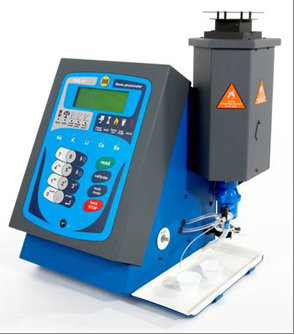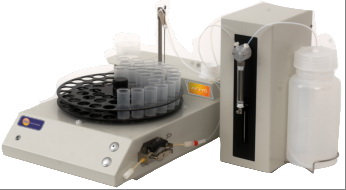GB/T5009.91-2003 food potassium and sodium test |
Nutritional Element Analysis Solution


Food nutrition label management practices

Since the Ministry of Health promulgated the "Food Nutrition Labelling Regulations" on May 1, 2008, all foods must be detailed in their food nutrients, nutritional claims and nutritional function claims. The Code requires mandatory testing and labeling of sodium and potassium, which are common nutrients in food.
The main purpose of formulating food nutrition label management methods is to guide and standardize the labeling of food nutrition labels of enterprises, guide consumers to rationally select foods, promote dietary nutrition balance, and protect people's health.
Interpretation of GB/T 5009.91-2003
As a national standard method for the determination of potassium and sodium as a common food element in foods, flame emission spectroscopy is used, which is derived from the international standard ISO 8070-1987, "Determination of sodium and potassium in milk powder - flame emission spectroscopy". The national standard method has gone through the formulation of GB12397-1990 "Method for the determination of potassium and sodium in food" in 1990, and the revision of GB/T5009.91-2003 in 2003, but the basic method of flame emission spectroscopy has not changed.
In today's ever-changing elemental analysis equipment, atomic absorption spectrophotometer (AA) and inductively coupled plasma optical emission spectrometer (ICP) have become more and more important equipment for elemental analysis, but for the single-item, multi-sample food nutrient detection In terms of detection using an atomic absorption spectrophotometer, it takes too much time, and the use of ICP detection is too costly. The flame photometer measures the high efficiency and economy of potassium and sodium, and it is convenient for all kinds of laboratories at different levels to carry out this test project. Therefore, it is still the first choice for the determination of national standard methods for potassium and sodium in food.
Nutritional Element Analysis Solution
When using the flame photometer to analyze the sodium and potassium nutrients in food, users often face confusions about low data accuracy and poor reproducibility. Since the accuracy of the elemental test data in the food nutrition label is significant for food quality control management and market regulation requirements, we recommend the following solutions:
The BWB-XP multi-element flame photometer designed and manufactured by British BWB has the following advanced features, which ensures the high efficiency of detection and fundamentally solves the problem of accuracy and reproducibility of elemental analysis data, so that the flame photometer can fully Meet the needs of food nutrition analysis.
1 , five-channel detection system
The high-performance optical components are used to simultaneously sort the five characteristics of monochromatic light, and the multi-channel parallel optical fiber is used for optical signal transmission, and the five elements of Na, K, Li, Ca, and Ba can be simultaneously analyzed, and the detection efficiency is comprehensively improved.
2 , built-in silent air compressor
The built-in silent air compressor is equipped to achieve the best gas/air ratio to ensure the stability of the flame, thus effectively avoiding the data deviation caused by the failure of the external air compressor to achieve the optimal gas/air ratio.
3 , large linear range
The use of high-performance optoelectronic components enables the linear range of element detection to reach 5 times that of a conventional flame photometer, reducing the random error caused by sample dilution and effectively improving the accuracy of the test data.
4 , built-in calibration correction function
The built-in calibration correction function can effectively reduce the fluctuation of detection data caused by fluctuations in the experimental environment (such as temperature, pressure, voltage, etc.), and effectively improve the reproducibility of the detection data.
5 , continuous reading, automatic judgment function
The detection data is a continuous reading mode, which can avoid the data deviation caused by the single point reading; the detection data is automatically determined by the system, which can avoid the human error caused by the manual reading.
6 , fast data logging function
BWB-XP comes standard with data logging communication software, which makes it easy to record experimental data in real time, prints specification test reports including dynamic measurement graphs, and provides effective traceability for raw records of fair data. An optional built-in printer can be used to quickly print measurement data to meet the original recording requirements of different laboratories.
7 , complete automated sample preparation function
BWB-XP can be equipped with an automatic sample diluter and an autosampler according to the actual needs of the user. It can realize the unmanned level of sample detection and greatly solve the problem of automatic continuous detection of large sample size.
Freeze Dried Fruit Powder
Freeze-dried powder is a sterile powder injection obtained by freezing the liquid medicine into a solid state in a sterile environment, and subliming and drying the water in a vacuum. Freeze-dried powder is composed of a bottle of high-purity and high-active biological protein freeze-dried powder and a high-purity liquid essence. When using, it needs to be connected with a patented vacuum to reconstitute the freeze-dried powder and the essence to activate the biological protein activity.
Freeze Dried Fruit Powder,Strawberry Powder,Freeze Dried Powder,Raspberry Powder
YT(Xi'an) Biochem Co., Ltd. , https://www.yt-linkherb.com







